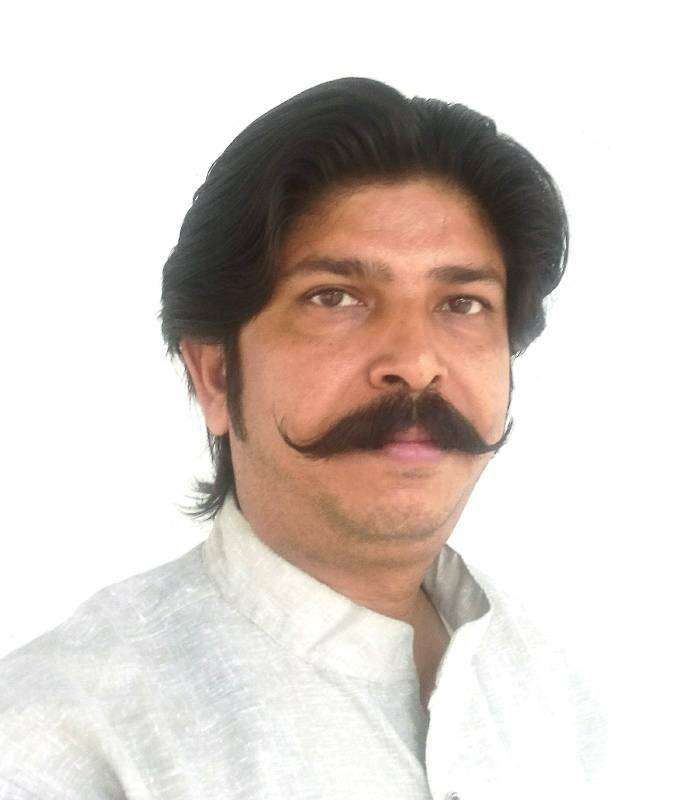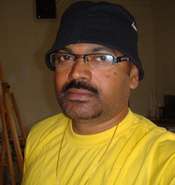
Polish-American novelist, Jerzy Kosinski once said that the principle of true art is not to portray but to evoke. This is exactly what modern art intends to propagate, similar to timeless classics like Mona Lisa. These artworks want to evoke a wave of emotion that opens up your senses to the imagination of artists, clearing the dust of realism.
You can never understand art if you keep finding reasons to like it because it isn’t meant to be liked, it is meant to make you feel something. Modern art is evolving with artists like Subodh Gupta, who are creating spectacular sculptures and artworks with everyday objects. Modern AKA contemporary art is breaking the barriers of the art world, bringing to life unusually striking paintings and sculptures.
Indian Contemporary Art
Indian art is a blend of years of cultural and religious diversity that makes it a kaleidoscope of colours, shapes, elements, and compositions. Whether it is an artefact from the Harappan Civilization or a relic of the Mughal era, the artistic expression of Indian artists have both amazed and bewildered the rest of the world for centuries.
The country is so full of inspiration and young artists from India have achieved so much success and recognition globally. Today, Indian contemporary art is rubbing shoulders with the elites of the art world in posh galleries and museums all across the globe.
In fact, Indian art lovers and galleries like the National Gallery Of Modern Art are honouring celebrated artworks and promoting artists, helping them not just earn recognition but a living out of their talent. This is a proud moment for the numerous artists who have been struggling for years to achieve this glory.
Modern Indian Art Movement
In the late 19th century in Calcutta, India, a new era of the artistic revolution was born in the country of cultural colours and colonization. While freedom fighters were armed to drag the British out of India, somewhere in the dark alleys of the unknown, there were artists expressing the agony of starving countrymen and the beauty of a nation once known as the golden bird.
In the new art schools established by the British, especially in Bengal, traditional Indian art was being revived with some western influence. Easel painting and oil paint helped artists like Raja Ravi Verma create spectacular artworks like Shakuntala that is one amongst the most celebrated artwork of the bygone era.
The revivalist of this era tried to bring back the tradition of epics and mythology in the art world with the new techniques and oil paints sourced from the western world. However, their lack of originality and the social consciousness to understand the classical times as well as the contemporary art didn’t contribute much to the movement.
In 1947, after India gained independence from the British Raj, a group came into existence, profoundly named as the Progressive Artist’s Group. The name itself suggests that the artists in this group intended to change the ancestral path of the Indian art world and bring together something new and more ambitious.
Though heavily influenced by Indian themes and culture, the artworks of this era comprise of strokes of western influence. After the economic liberalization in the 1990s, new traditions of art like Pseudorealism by Devajyoti Ray emerged and access to modern ideas and techniques paved the way for more reflective and expressive artworks.
Under the eminent guidance of prodigies like H. A. Gade, M. F. Husain, K. H. Ara, S. K. Bakre, S. H. Raza, and F. N. Souza, Indian artists found new ways to express their imagination in the post-colonial era. The Progressive Artist’s Group added a new life to the dying Indian art heritage and helped it achieve recognition globally.
The colourful canvas of the country’s art culture witnessed the rise of expressionistic style by F. N. Souza and modified Cubist style by M. F. Hussain that he deployed to create narrative paintings, which were quite new to Indian art lovers. You can view some of his narrative style paintings like Zameen in the National Gallery Of Modern Art, New Delhi.
Jayasri Burman is one of the most celebrated names in the Indian art world and her paintings in the post-colonial era were like a fresh breath of air. Her paintings evolved the unassertive Indian woman into the fierce representation of goddesses and half-animal and half-human creatures.
Though the artist refuses to be labelled a feminist, her work is powerful and somehow represents the Age of Aquarius, which is the astrological age that is said to witness the strengthening of the female power or the rise of feminism in the world.
These are just a few of the artists who didn’t just proclaim fame at a time when the country was witnessing major developments in various fields and writing about all of them in one piece of content will turn this blog into a thesis. However, the point is that these artists bought a revolution and their contribution is priceless.
The contemporary artists from India, who are now making a mark in the international art world wouldn’t have succeeded without the efforts of these artists. Today, the timeless works of these remarkable artists are a source of inspiration for the young artists, who are trying to spread their wings to soar high and get an audience with the elites of the art world.
Contemporary Art In Architecture & Fashion
Apart from paintings and sculptures, the 1980s also witnessed the blooming fashion and architecture industry in India. Reputed fashion schools and architecture schools were flooding with admission applications and new schools were being established to meet the growing demand for professional courses in both the domains.
The traditional career choices were being ditched for bright prospects in the fashion and architecture world and both the industries evolved remarkably during this era. The reason behind these occurrences was certainly the increased exposure to the western world with contemporary art as well as the growth of mass media.
The rise of contemporary art in the country was quite favourable for numerous industries and it can be said that it has been a major factor behind the rapid growth and development, as recorded in the past few decades.





















